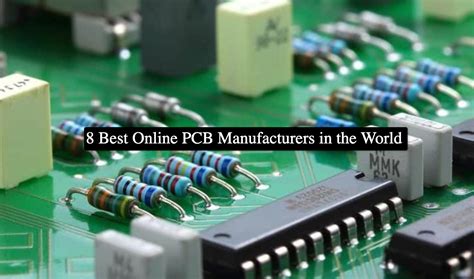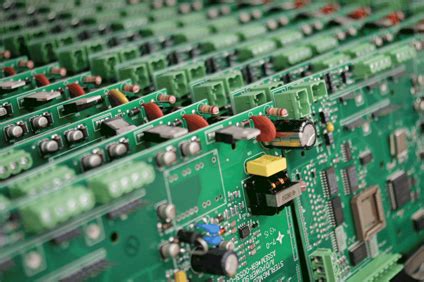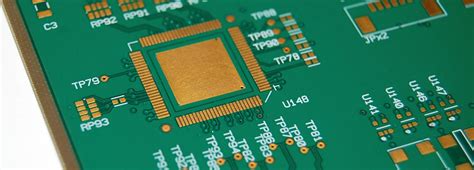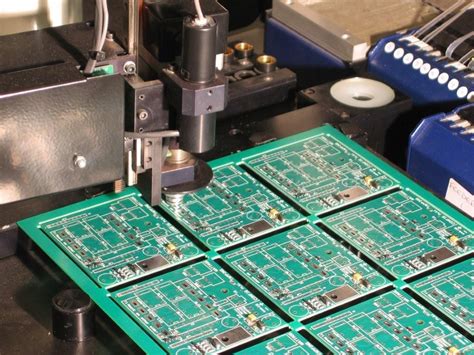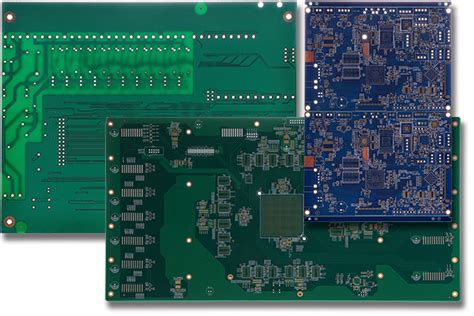Efficient PCB Manufacturing with Integrated Components

Key Takeaways
In the realm of pcb manufacturing, integrating components directly into the production process has become a cornerstone for achieving efficiency and quality. By leveraging advanced techniques, pcb manufacturing companies can streamline their operations, thereby reducing the pcb manufacturing cost while enhancing the overall product quality. A significant benefit of this approach is the reduction in assembly time, which directly impacts your production schedules and bottom line.
Moreover, integrating components allows for more compact designs, which is crucial in today’s miniaturized electronic devices. As you explore these methods, consider how they can transform your pcb manufacturing business. For instance:
| Aspect | Traditional Approach | Integrated Approach |
|---|---|---|
| Assembly Time | Longer | Shorter |
| Component Placement Precision | Variable | Increased |
| Costs Related to Assembly | Higher | Lower |
| Design Flexibility | Limited | Enhanced |
Moving forward, it’s essential to keep abreast of technological advancements that further enhance this integration process. As you reflect on these takeaways, remember that adopting innovative practices not only optimizes your operations but also positions your business for future success.
"Efficiency in PCB manufacturing isn’t just a goal; it’s a continuous journey toward innovation."
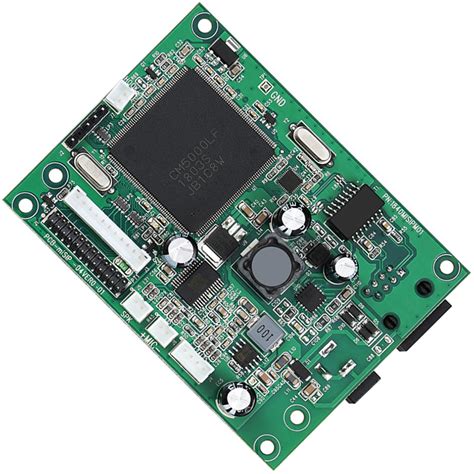
Introduction to PCB Manufacturing and Component Integration
In the realm of pcb manufacturing, understanding the integration of components directly into the production process is paramount. By merging design and assembly, you can achieve a more efficient and effective workflow. The rise of integrated component techniques allows pcb manufacturing companies to minimize labor costs and material waste, ultimately leading to a reduction in overall pcb manufacturing cost. This approach not only simplifies the logistics of assembly but also enhances reliability in modern electronics, where precision is key. You will find that modern practices encourage a shift towards this holistic method of production, contributing to more robust final products. As you delve deeper into the nuances of pcb manufacturing business, consider how these integrated solutions can offer competitive advantage in a fast-evolving market. Embracing innovation in this arena can lead to significant improvements in both performance and quality, ensuring that your products meet the rigorous demands of today’s technology landscape.

Advantages of Integrated Component Techniques
In the realm of PCB manufacturing, the integration of components directly into the manufacturing process brings forth significant advantages. By opting for integrated component techniques, you can drastically reduce the PCB manufacturing cost, as fewer separate processes mean less time and labor are required. This efficiency not only accelerates production but also minimizes the risk of errors that frequently arise during assembly. Furthermore, PCB manufacturing companies that adopt these innovative methods often find that their designs are optimized for better performance. When components are integrated, you achieve a more compact layout which can lead to enhanced signal integrity and overall functionality within your electronic devices. Additionally, the streamlined process fosters a consistent quality across all manufactured boards, ensuring reliability in your products. As you explore options within the PCB manufacturing business, consider how these integrated techniques can transform your operations and set you apart from competitors in today’s market. Ultimately, embracing these advantages positions you to meet modern electronics demands while maintaining cost-effectiveness and quality assurance throughout your production cycle.

Key Technologies in Efficient PCB Manufacturing
In recent years, PCB manufacturing has seen significant advancements, particularly with the integration of components directly into the production process. These technological innovations not only enhance efficiency but also contribute to a reduction in PCB manufacturing costs. Techniques such as surface mount technology (SMT) allow for smaller components to be placed on the surface of the PCB, minimizing space and improving performance. Moreover, automated pick-and-place machines have revolutionized production lines operated by PCB manufacturing companies, enabling faster assembly with greater precision. By utilizing advanced simulation software during the design phase, you can identify potential issues early on and streamline the development process. Furthermore, incorporating materials with improved thermal and electrical properties facilitates better performance and reliability in your PCB manufacturing business, ultimately leading to higher quality products. As you explore these technologies, you’ll find that integration not only speeds up production but also enhances your overall product performance in the competitive electronics market.
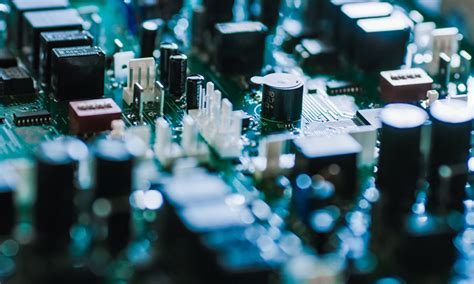
Streamlining Design Processes for Enhanced Production
In the competitive realm of PCB manufacturing, it is essential to adopt strategies that not only address your production needs but also optimize efficiency. By integrating components directly during the design phase, you can reduce the long-standing assembly complications that often plague PCB manufacturing companies. This approach enables you to streamline workflows, allowing for quicker turnaround times and lower PCB manufacturing costs. When components are factored into design from the outset, you minimize redesign cycles and avoid the pitfalls of late-stage integration. You also enhance communication among various teams involved in the PCB manufacturing business, ensuring that everyone is aligned on specifications and timelines. Implementing these integrated techniques not only speaks to increased productivity but also supports a high standard of quality assurance throughout the manufacturing process. As you adapt these measures, you’ll find a significant impact on your operations, from reducing waste to improving overall product reliability and performance, setting a firm foundation for future endeavors in electronics.
Quality Assurance in Integrated PCB Manufacturing
In pcb manufacturing, ensuring the highest standards of quality is paramount, especially when integrating components directly into the production process. You might find that pcb manufacturing companies are increasingly adopting rigorous quality assurance protocols to minimize defects and ensure reliability in their products. One key aspect of this is implementing robust testing methods throughout the manufacturing stages, which can significantly reduce the overall pcb manufacturing cost by identifying potential failures early on. By utilizing automated inspection systems and advanced testing technologies, you can achieve a higher level of precision and efficiency. This not only enhances your production capabilities but also strengthens your position in the pcb manufacturing business landscape. Implementing thorough quality checks at each step—ranging from initial design reviews to final assembly inspections—can lead to improved yield rates and customer satisfaction. Ultimately, prioritizing quality assurance within integrated PCB processes is a strategic move that pays dividends in both brand reputation and operational efficiency.
Case Studies: Successful Implementations of Integrated Techniques
In the realm of pcb manufacturing, several companies have harnessed integrated component techniques to significantly enhance their production efficiency and product quality. For instance, Company A utilized advanced automation in their pcb manufacturing business to seamlessly integrate components within their boards during the assembly phase. This method not only reduced the overall pcb manufacturing cost but also minimized assembly errors, leading to a decrease in product returns. Another compelling case is with Company B, which implemented a design-to-manufacture approach that involved close collaboration between engineering and manufacturing teams. This collaboration enabled them to innovate design solutions that optimized the layout of components on the PCB, thereby improving both functionality and thermal performance. Such real-world examples underscore the advantages of leveraging integrated techniques, as they can play a pivotal role in defining success for pcb manufacturing companies striving to stay ahead in a competitive market. By analyzing these case studies, you can gain valuable insights into how adopting integrated practices can transform not just production processes, but also the overall quality and reliability of electronic devices.

Future Trends in PCB Manufacturing Technology
As you look towards the horizon of PCB manufacturing, you’ll notice that the landscape is constantly evolving, shaped by advancements in technology and industry demands. The integration of components directly into the PCB manufacturing process is at the forefront of these changes, allowing for considerable optimization in production costs and timelines. With the rise of miniaturization and increased complexity in electronic devices, PCB manufacturing companies are investing heavily in innovative techniques that not only enhance efficiency but also improve product quality.
One such trend is the adoption of advanced automation and artificial intelligence to streamline workflow and reduce human error. This transition ultimately lowers the pcb manufacturing cost, making it more feasible for new businesses to enter the market. Additionally, these technologies enable better data analysis, which helps in predicting maintenance needs and improving overall operational effectiveness. It’s also noteworthy that companies are increasingly focusing on sustainable practices within their pcb manufacturing business, such as reducing waste and utilizing eco-friendly materials.
As you navigate this evolving field, understanding these trends will be essential for making informed decisions about production strategies and investments in new technologies. By staying ahead of these advancements, you’ll be well-positioned to meet future demands in a competitive electronics market while benefitting from reduced costs and enhanced quality control throughout your pcb manufacturing processes.
Conclusion: The Impact of Efficient Processes on Modern Electronics
The realm of PCB manufacturing has undergone significant transformation thanks to the integration of components directly into the manufacturing process. This shift not only reduces the PCB manufacturing cost but also streamlines production timelines, enabling PCB manufacturing companies to respond more effectively to market demands. By adopting efficient and innovative techniques, your PCB manufacturing business can significantly improve its overall productivity. Implementing these methods leads to higher precision and consistency in product quality, which is crucial in today’s fast-paced electronics market. Ultimately, as you leverage these advanced processes, you’ll find that modern electronics can be produced with enhanced efficacy and quality, setting your operation apart from competitors while meeting the growing needs of consumers and industries alike.
Conclusion: The Impact of Efficient Processes on Modern Electronics
In the competitive landscape of PCB manufacturing, the integration of components directly into the production process offers significant advantages. By adopting innovative techniques, you can reduce PCB manufacturing cost while improving overall quality and efficiency. This is particularly crucial as you navigate the evolving demands of modern electronics. The insights gained from successful PCB manufacturing companies highlight that streamlined design processes not only enhance production speed but also ensure reliability in the final product. By embracing these advanced methodologies, your PCB manufacturing business can stay ahead of the curve, effectively meeting the industry’s needs. Ultimately, efficient PCB manufacturing with integrated components fosters a better synergy between design and assembly, paving the way for superior electronic solutions that resonate with consumers and industry stakeholders alike.
FAQs
What is PCB manufacturing?
PCB manufacturing refers to the processes involved in creating printed circuit boards, which are essential components in most electronic devices. It encompasses designing the layout, fabricating the board, and assembling integrated components onto the PCB.
How do integrated components impact PCB manufacturing cost?
Integrating components directly into the PCB manufacturing process can significantly reduce costs. By minimizing the number of separate assembly steps and optimizing material usage, you can achieve a more cost-effective solution.
Why should I consider PCB manufacturing companies with integrated techniques?
Choosing PCB manufacturing companies that utilize integrated techniques provides you with a streamlined approach to electronic design and reduced lead times. Their expertise in blending design with production enhances overall efficiency, which is vital in today’s fast-paced market.
What are the advantages of integrating components directly into PCB manufacturing?
Integrating components not only cuts down on production time but also improves design flexibility. It allows for innovative layouts that can improve performance and reliability, making it a crucial aspect for any PCB manufacturing business looking to stay competitive.
How does quality assurance play a role in integrated PCB manufacturing?
Quality assurance in integrated PCB manufacturing focuses on ensuring that the combination of board and component works flawlessly together, which enhances overall product quality. By implementing strict quality control measures throughout the process, you can prevent defects and ensure reliability.
For more information on how to optimize your projects through efficient processes, please click here: Andwin PCB Manufacturing.


